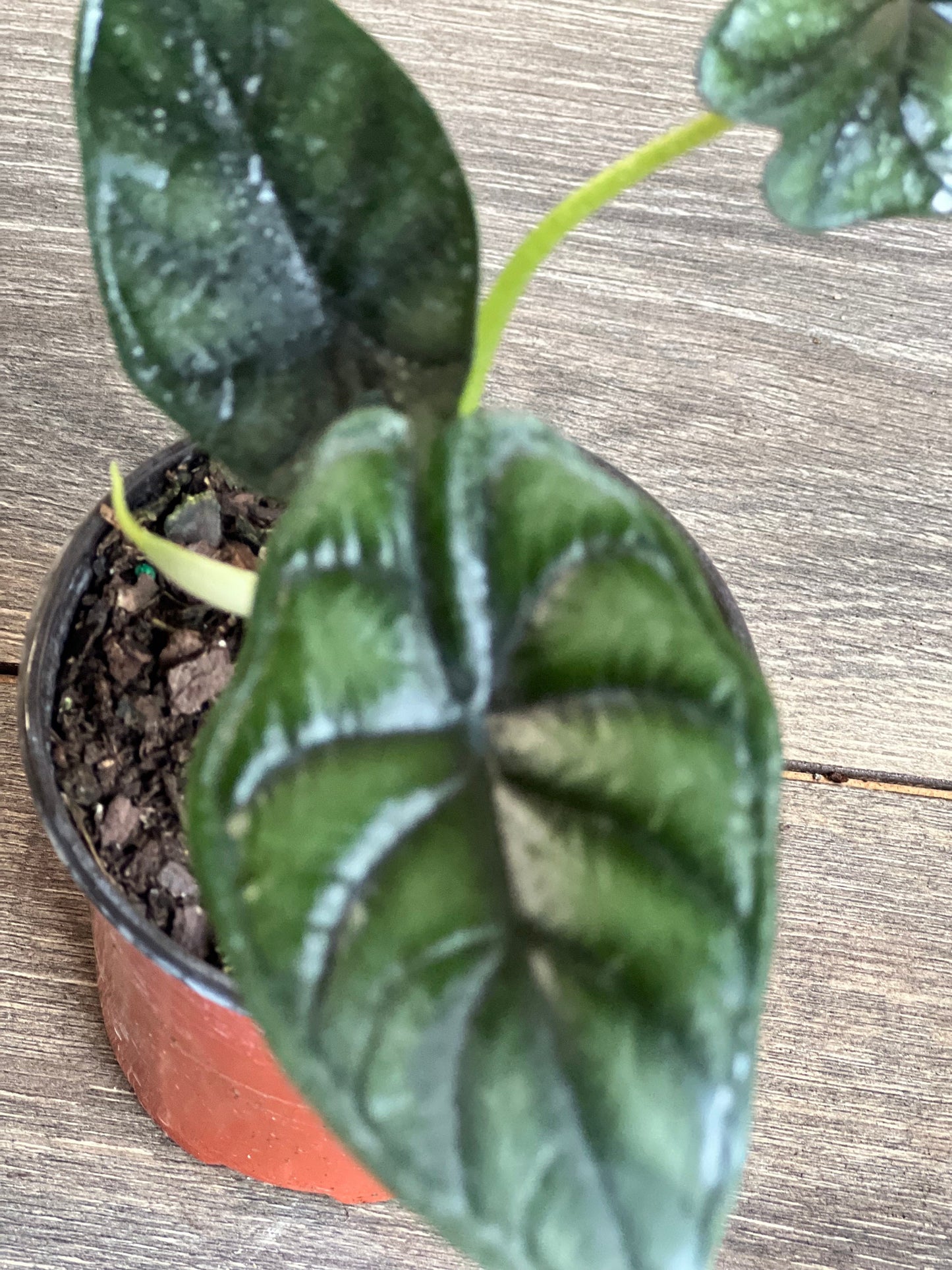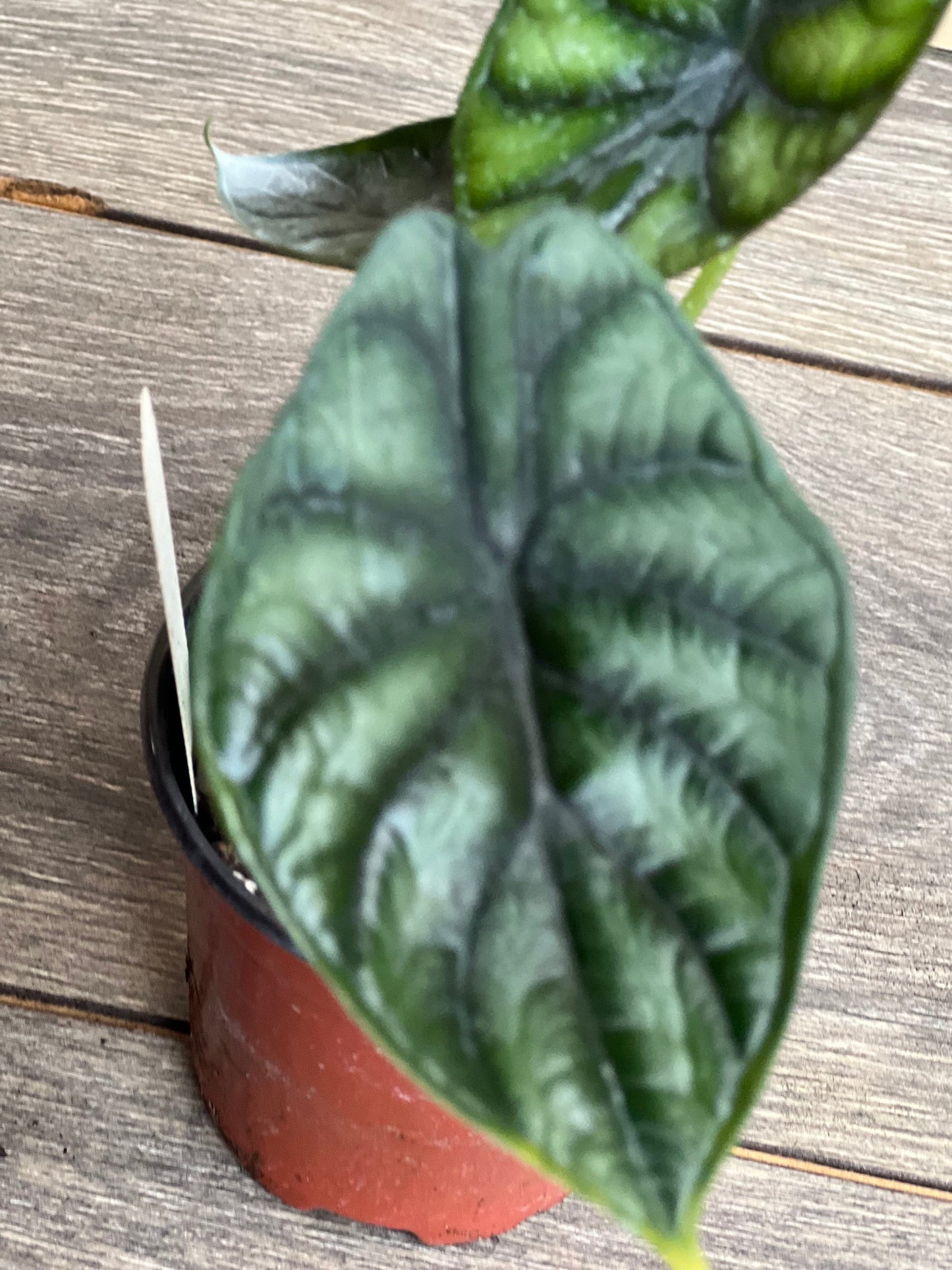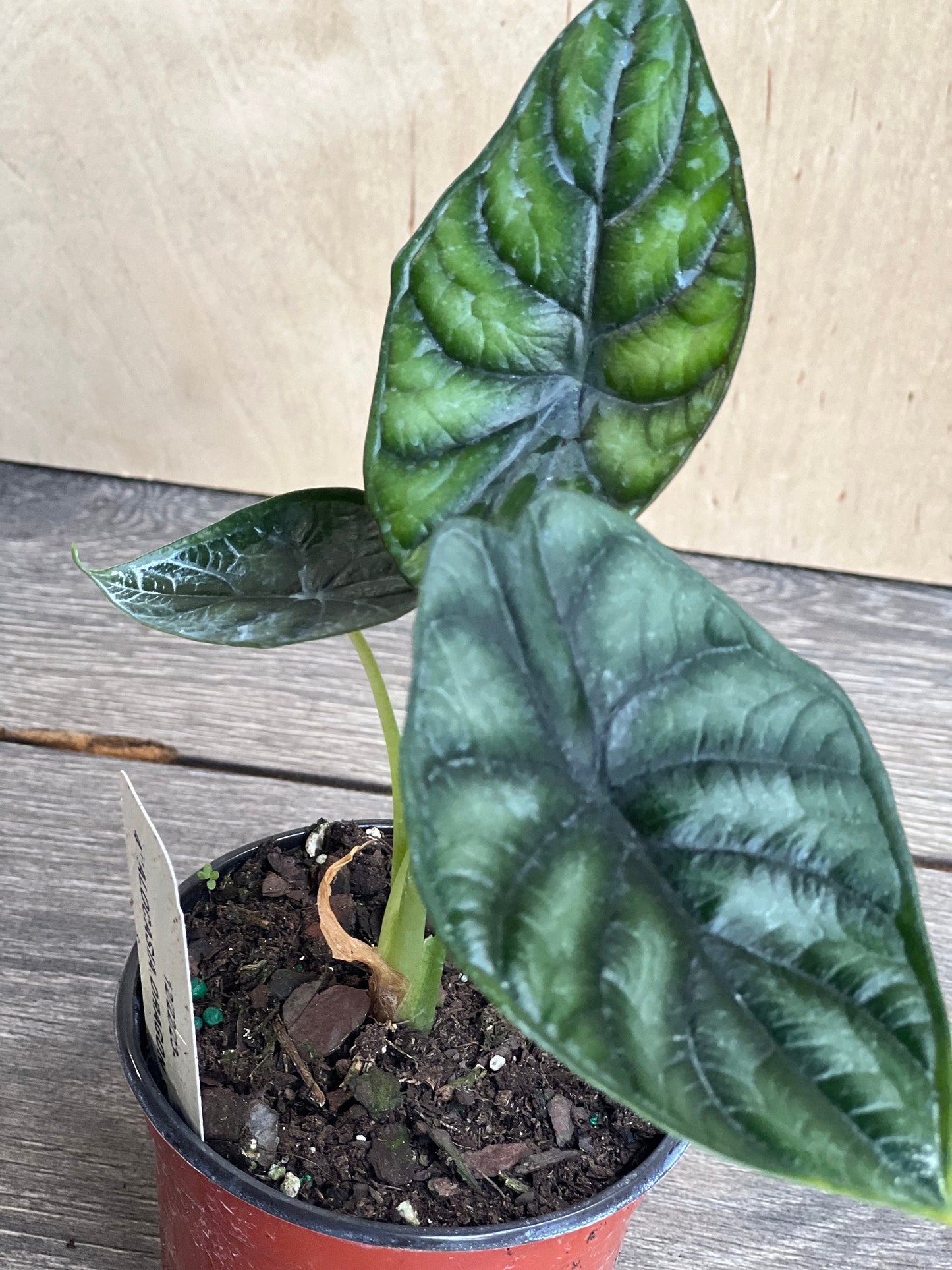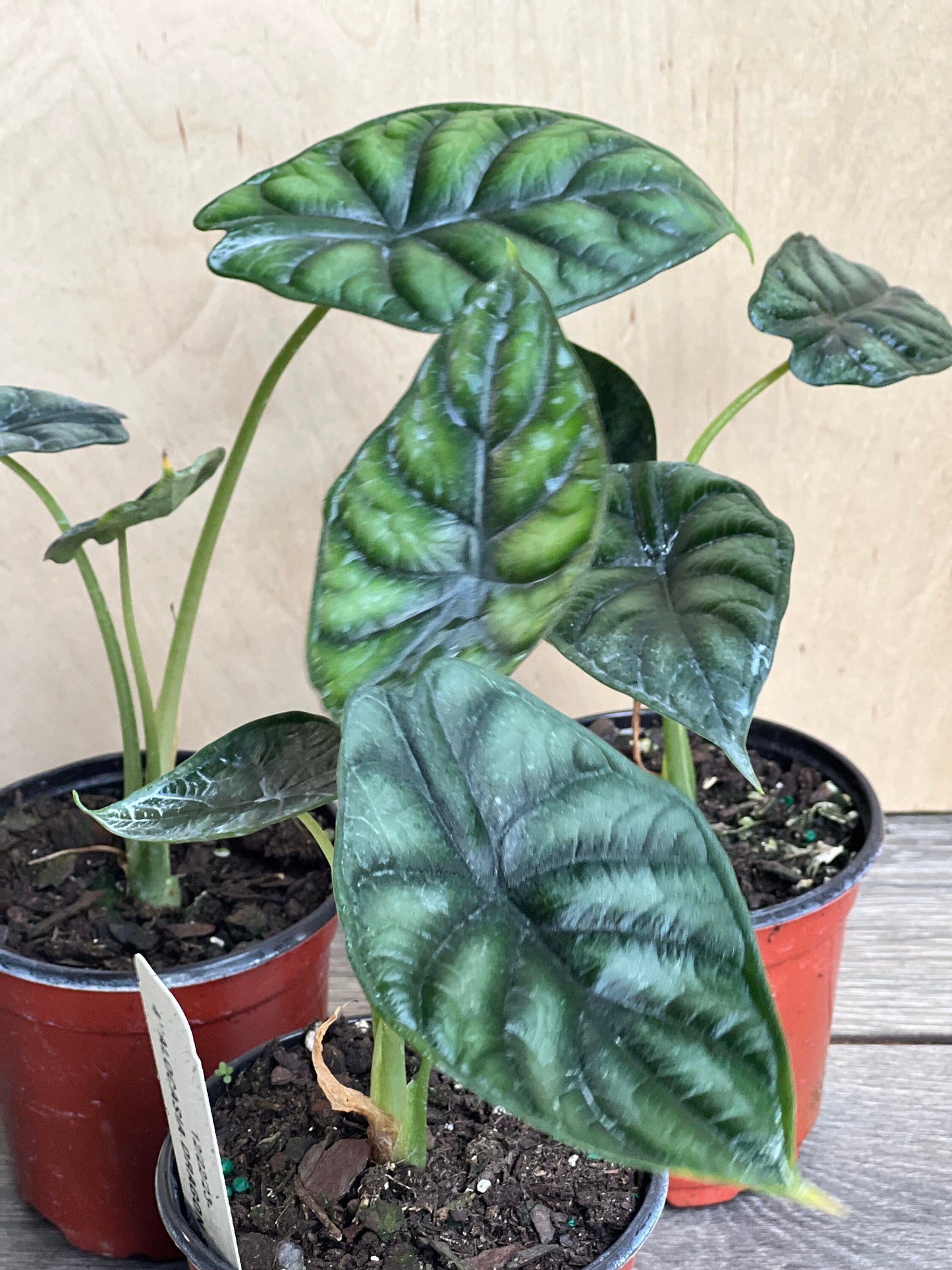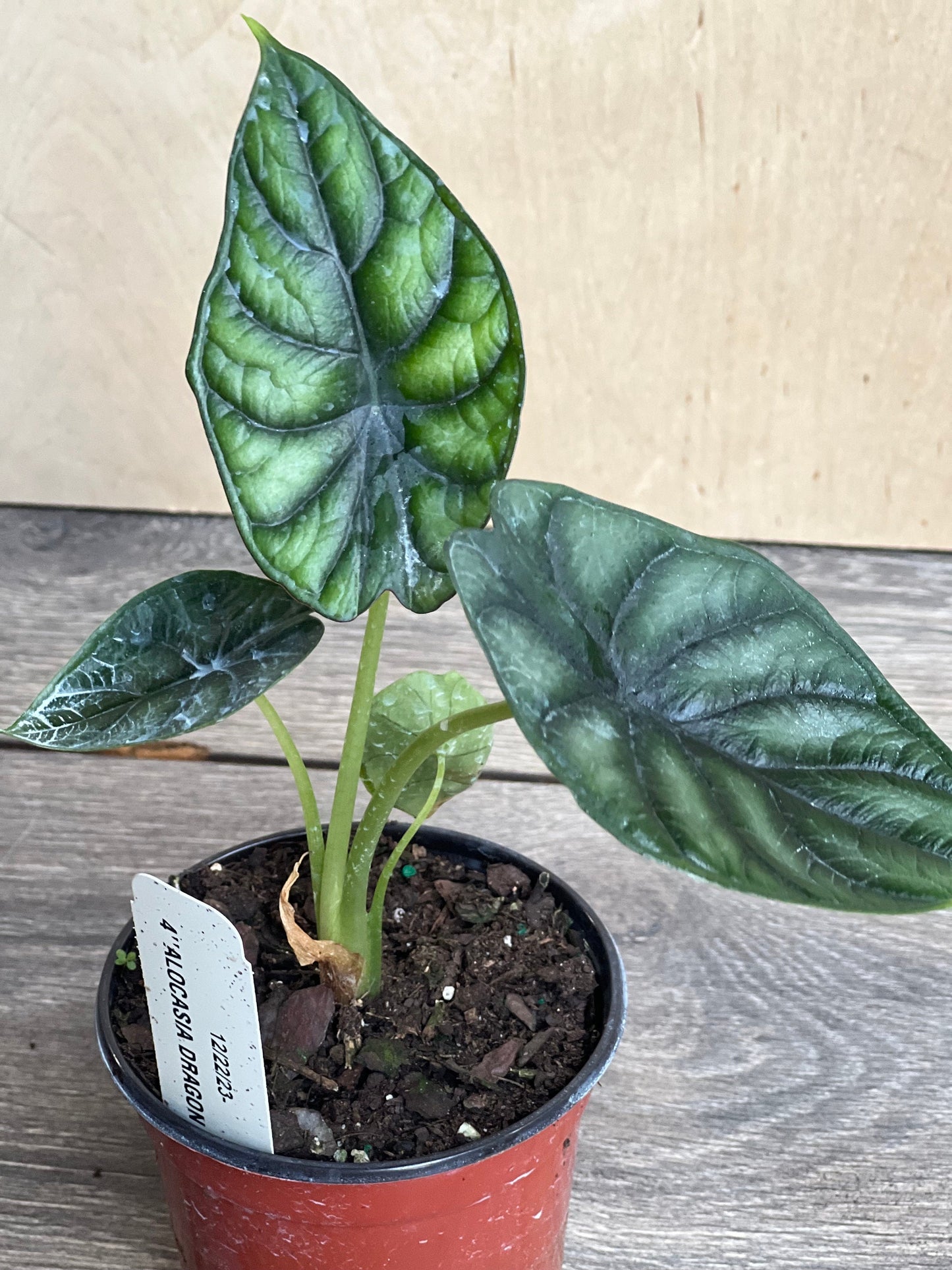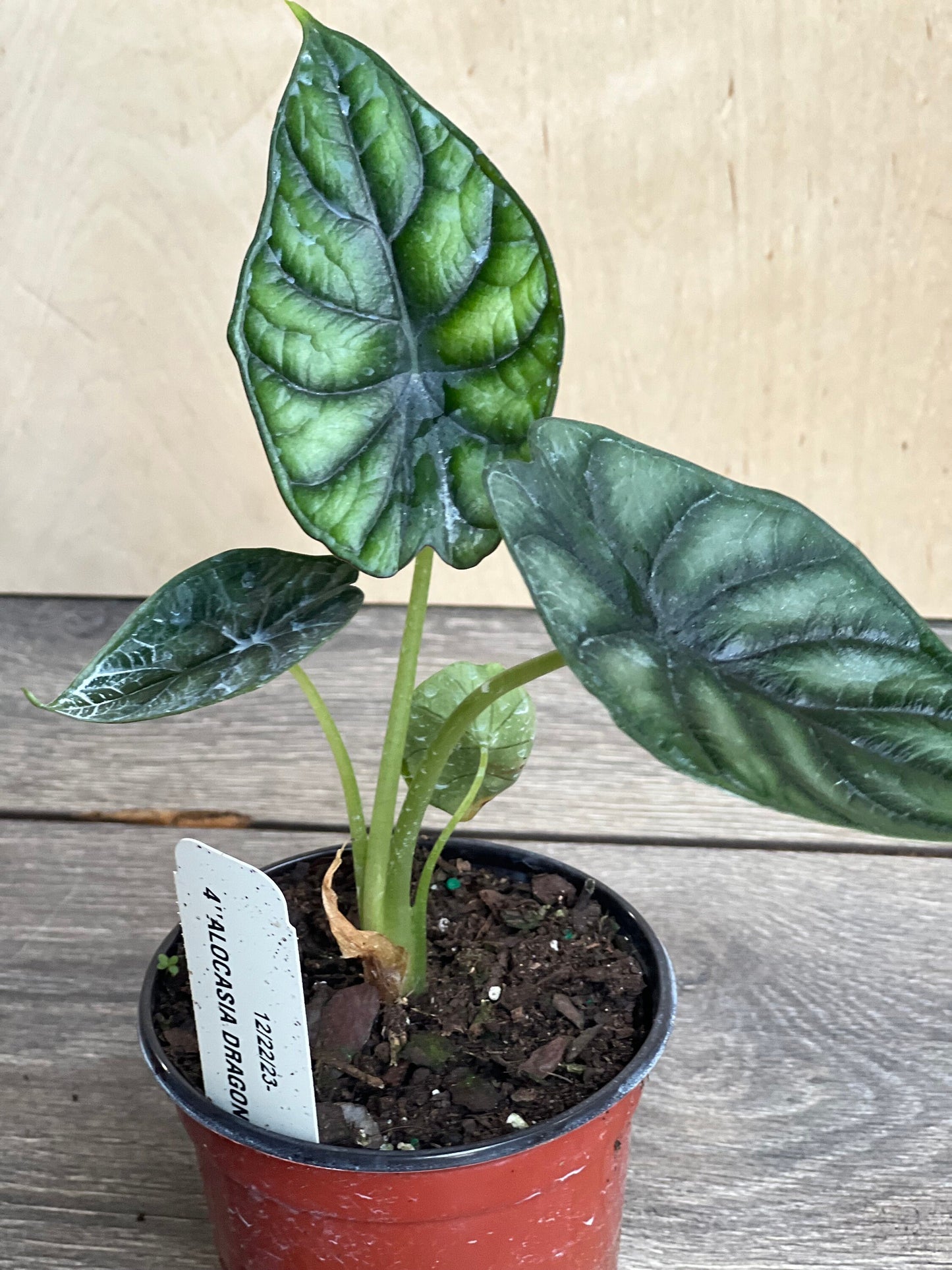Alocasia Dragon Scale, in 4" pot, house plant
Alocasia Dragon Scale, in 4" pot, house plant
Couldn't load pickup availability
Note: You will receive one Alocasia Dragon Scale in 4" similar to the pictures
Alocasia 'Dragon Scale' is a striking and exotic plant known for its unique, textured foliage that resembles the scales of a dragon. The large, arrow-shaped leaves are a rich metallic green, with pronounced veins that create a dramatic, embossed effect, giving the plant an almost otherworldly appearance. The undersides of the leaves are typically a deep purple or burgundy, adding to its visual intrigue. Dragon Scale prefers bright, indirect light and requires consistent moisture, though it is sensitive to overwatering and should not be allowed to sit in waterlogged soil. This Alocasia variety is perfect for plant enthusiasts seeking a bold, statement-making plant that adds a touch of mystique and sophistication to indoor spaces
Light Requirements
- Ideal Light: Alocasias prefer bright, indirect light. They do well in areas with plenty of natural light, but avoid placing them in direct sunlight, which can scorch their leaves.
- Low Light: While they can tolerate low light, growth will slow, and the plant may lose some of its vibrancy, especially in variegated types.
- Best Location: Place them near an east or west-facing window, or a spot that gets filtered sunlight throughout the day.
Watering
- Watering Frequency: Alocasias like consistently moist soil but do not like to sit in water. Water your plant when the top 1-2 inches of the soil are dry. This prevents the plant from getting too soggy, which can lead to root rot.
- Watering Method: Water thoroughly, allowing excess water to drain out of the pot. Make sure your pot has drainage holes.
- Signs of Overwatering: Yellowing leaves or mushy stems can indicate overwatering. Be cautious not to let the soil remain too wet for long periods.
- Humidity: Alocasias are humid-loving plants and prefer humidity levels of 60% or higher. To increase humidity, you can mist the leaves, use a humidity tray, or place a humidifier nearby, especially in winter when indoor air tends to be dry.
Temperature
- Ideal Temperature: Alocasias prefer warm temperatures between 65°F and 80°F (18°C - 27°C). Keep them in an environment that is consistently warm.
- Cold Sensitivity: Alocasias are sensitive to cold and should be kept away from drafts, air conditioning vents, or temperatures below 60°F (15°C). Exposure to cold can cause stress, yellowing leaves, and slow growth.
Soil
- Well-Draining Soil: Alocasias thrive in well-draining, loose potting soil. A peat-based mix combined with perlite or orchid bark is ideal for allowing water to pass through without remaining soggy.
- Repotting: Repot every 1-2 years or when the plant becomes root-bound. Choose a slightly larger pot with good drainage. Alocasias don’t like being in pots that are too large for their root system, so avoid using overly large containers.
Fertilizing
- Growing Season (Spring and Summer): Alocasias are actively growing during the warmer months, so fertilize them once a month with a balanced, water-soluble fertilizer diluted to half strength. A fertilizer with a ratio of 10-10-10 or 20-20-20 works well.
- Winter Care: In fall and winter, when the plant’s growth slows, reduce or stop fertilizing. The plant doesn’t need as much nutrition during dormancy.
- Signs of Over-fertilizing: Brown leaf tips, stunted growth, or yellowing leaves can be signs of over-fertilizing, so always err on the side of caution and use a diluted solution.
Pruning and Maintenance
- Cleaning Leaves: Alocasias have large, glossy leaves that can accumulate dust. Use a damp cloth to gently wipe the leaves clean. This also helps the plant absorb more light and maintain its health.
- Pruning: Prune dead or damaged leaves by cutting them back to the base. Alocasias naturally shed older leaves, especially as they grow, so don't be alarmed if some leaves die off during the year.
- Dormancy: During the colder months, Alocasias might drop some leaves as they go dormant. This is normal, and new growth will likely emerge when the plant resumes active growth in the spring.
Common Problems and Pests
- Pests: While Alocasias are generally pest-resistant, they can sometimes attract spider mites, mealybugs, and aphids. If you see webbing or sticky residue on the leaves, treat the plant with neem oil or insecticidal soap.
- Yellowing Leaves: Yellowing leaves can be a sign of overwatering, low light, or nutrient deficiency. Ensure the plant is in an appropriate location with enough light and check that the soil isn't staying too wet.
- Brown Leaf Tips: Brown or crispy leaf edges are often caused by low humidity, overfertilizing, or too much direct sun. Increase humidity and reduce fertilizer application if needed.
Share
